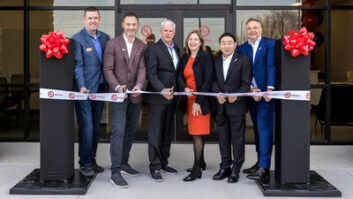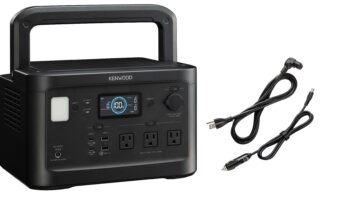The transition in consumer electronics retailing taking place this year, with well-known national retailers like Circuit City, CompUSA and RadioShack all having their problems was a prime topic for discussion among retailers and suppliers at the Progressive Retailers Organization (PRO) Group meeting May 8-10, here.
Of course PRO is not immune to the problems. Its largest member, Tweeter, reported a third-quarter loss of $32 million on the last day of the meeting and said it is considering Chapter 11 protection. And Harvey Electronics, which has had its own financial woes in the past year, announced its proposed acquisition of fellow PRO member MyerEmco on the first day of the Group’s meeting.
For those retailers having problems, each one is facing challenges unique to its own operation, some saying that they have lost focus. But lower flat-panel TV pricing and margins is the major problem that affects everyone. Prices for flat-panel TVs have been cut in half in many cases during the past year, resulting in slimmer margins. The industry’s over-distribution and over-reliance on flat-panel TVs to drive business is an overwhelming concern for retailers.
Steve Caldero, senior VP/COO of Ken Crane’s and a veteran of the supplier side with Yamaha, was blunt in his market assessment of flat-panel TVs. “Having reduced margins … has really cut into the profitability long term. [Salespeople] have a real challenge … trying to put enough of the products together [in a flat-panel sale] to actually create some profit for the company.”
He added, “We are suffering with the margin decrease because the manufacturers are in such a big hurry to grab market share with prices that the consumer wasn’t really clamoring for.”
When asked about the changes with well-known national retailers, Caldero said, “Seems like Circuit City, CompUSA and some of the others struggled with an identity. Should they follow Best Buy completely? Or should they try to cut out [their own] niche? Last year they seemed to follow Best Buy and try to ‘out Best Buy’ Best Buy, and that is a losing proposition for anyone. At the same time, they haven’t invested in their people and their facilities where they could really show a difference and give people a reason to come to their location the way the PRO Group retailers have … in their people and facilities.”
Jay Vandenbree, president of Sony consumer sales, noted about the changing retail landscape that “there is always churn. What is [different] now is that it is happening to some of the stalwarts of our business. They need to get back to basics and do basic retailing. There are different ideas out there, but eventually it’s like running a train. You have to shovel coal into the engine to make it work.”
Al Walters, president of Stereo Advantage, called some national retailers approach like “a one-trick pony. Run 10 percent off on something popular to sell and then say the margins aren’t there. That takes away the margins for everyone, including themselves. The ability to sell the product for what it’s worth is one of the problems. The other problem it that it is a quick sale that gets the customer out and you don’t build a relationship with the customer.”
About flat-panel TV pricing in particular, Walters said, “The problem is that the product is being sold well below its value. The customer gets an extraordinary value on a new technology. In the $1,500 price range is extraordinary product [and] it isn’t entry level anymore … so you get lower [prices] and lower gross profit.”
The solution for independents and national chains alike is to “sell up and attach. It is probably a lot more important to attach than sell up. The customer will hone in what they will spend, but they don’t know if they need the mounting hardware, the cabling and the set up.”
Dave Workman, executive director of the PRO Group, said flat-panel TV “isn’t a single product sale, or at least it shouldn’t be. It is really a matter of how a retailer executes it. Products can be commoditized, but solutions generally don’t.”
Max Wasinger, sales and marketing senior VP for Mitsubishi, put the changing retail scene this way: “The CE business is no longer 1 + 1 = 2. It’s 11. That’s how the industry is changing so rapidly.”
Wasinger said that specialists like those in the PRO Group can and should “work together” with manufacturers “to grow the business and create traffic because there is an important place for them. A chaotic retail environment creates opportunity and PRO-type retailers are in a perfect position to seize it and show how important the [specialty] channel is.”
Scott Ramirez, Toshiba marketing VP, said that retailers that have problems “provide an opportunity for someone else. Shifts in [consumer electronics] retailing and manufacturing always happen. Today business is strong and so is consumer demand for our products.”
What should be working for retailers is that “Flat panel is really a fashion business. While picture quality also drives sales, consumers love a thin, flat screen and will replace a TV to get that look.” And Ramirez noted, “While some consumers will put their flat panels with a base on a table, many consumers want them installed on a wall with brackets. A good retailer can sell a flat TV and do the installation, selling the experience.”
Bjorn Dybdahl, owner of Bjorn’s Audio Video, is doing just that. “Our margins are running up about a point and a half this year, and again labor is helping. And we are starting to see some rebound in audio. So the question is: Can we keep it up? I am concerned about the fall season with TV. None of us want to get into this business of selling TV a little bit above cost in order to sell the other stuff. We are not going to be able to survive.”
Toshiba’s Ramirez addressed current pricing trends stating, “There are no horror stories out there [on pricing]. The expectation of price cuts later in the year are making retailers worried. So far manufacturers are responsible.” Sony’s Vandenbree noted that his company “has been passive on pricing [in flat panel] during the past 90 days … trying to stabilize and respect the marketplace.”
But Mitsubishi’s Wasinger cautioned that during the year, “Supply will be adequate but there will be pricing pressure. That drives our business, that’s what [the industry] does. There will be a challenge environment [in flat-panel TV] from pricing.”
Unless many retailers figure out a foolproof strategy to add sales of accessories and installation, no matter the potential astronomical unit volumes of flat-panel TV sales, margins will be minuscule.
And razor-thin margins can also cause problems for established manufacturers as well as retailers. Caldero of Ken Crane’s put it this way, “Look, with brands like Vizio, they have 14 people in the U.S. running a national company to be a low-cost provider. What they have done is set the new ground level for how cheaply someone can operate. Can the other manufacturers operate that cheaply to sell just to club operations? Manufacturers should be looking over their shoulders and seeing how many more Vizios are there out there and could put them out of business.”













